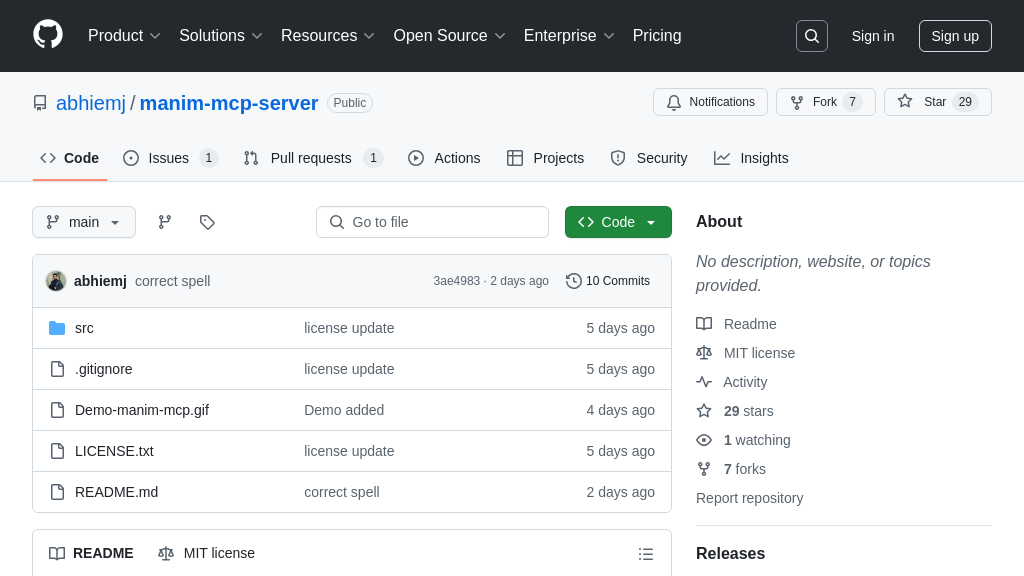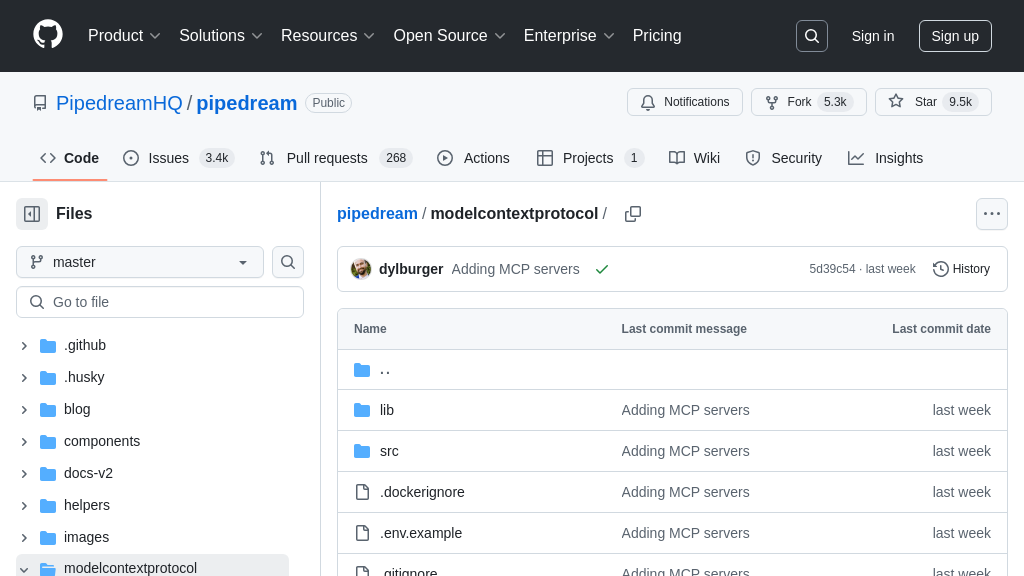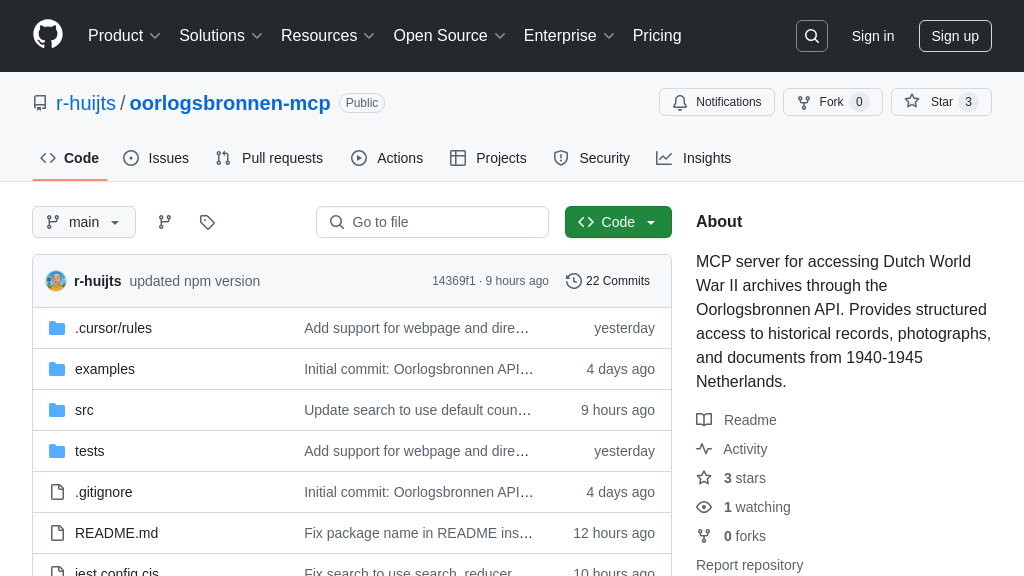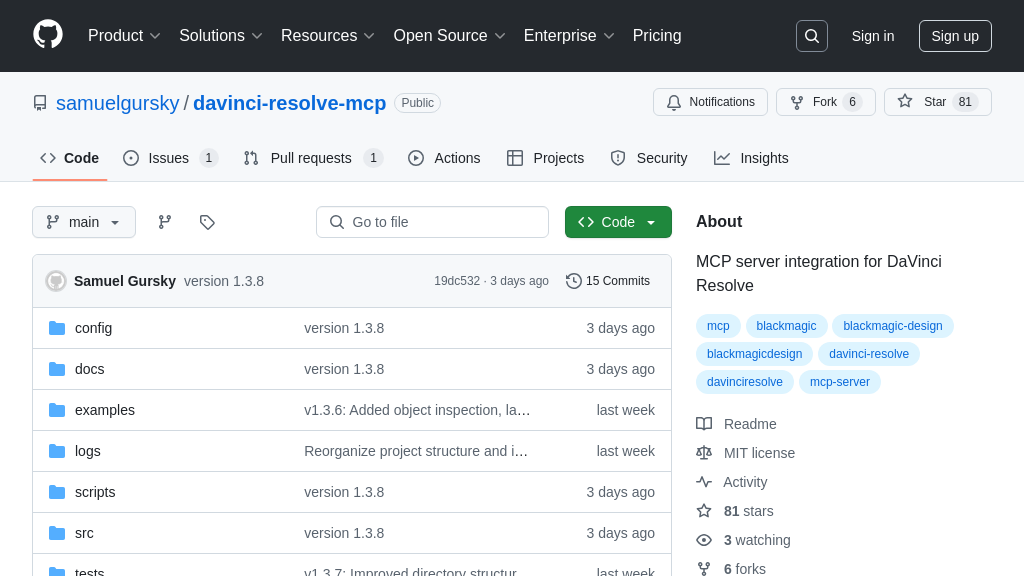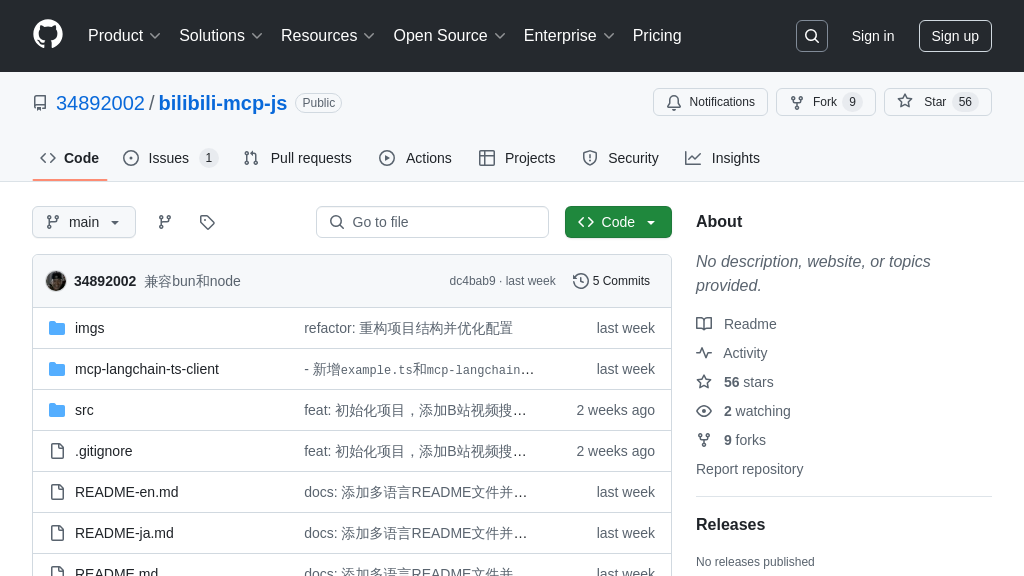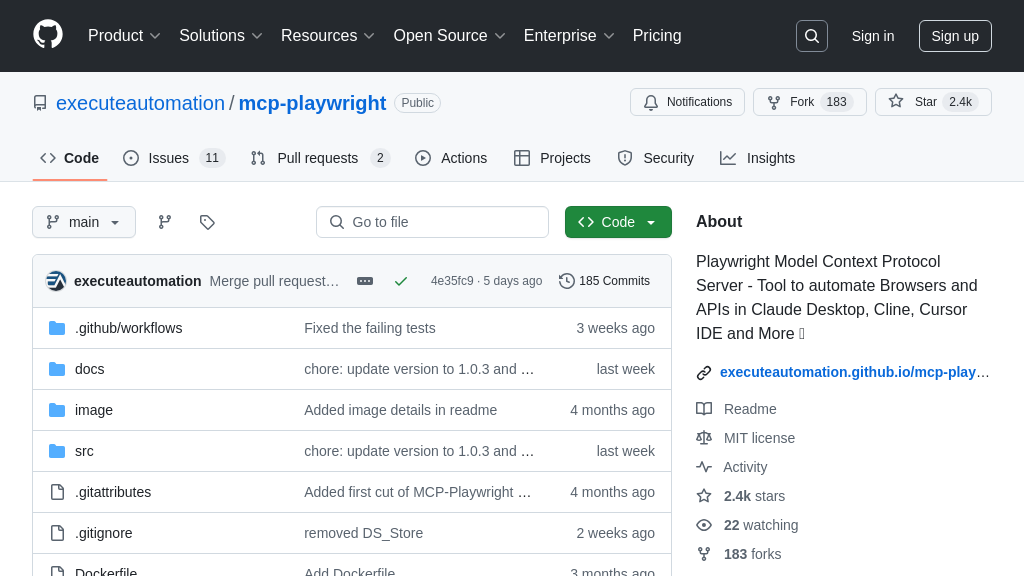genkit
Genkit MCP: Seamlessly integrate Genkit with the Model Context Protocol for enhanced AI model interaction and resource utilization.
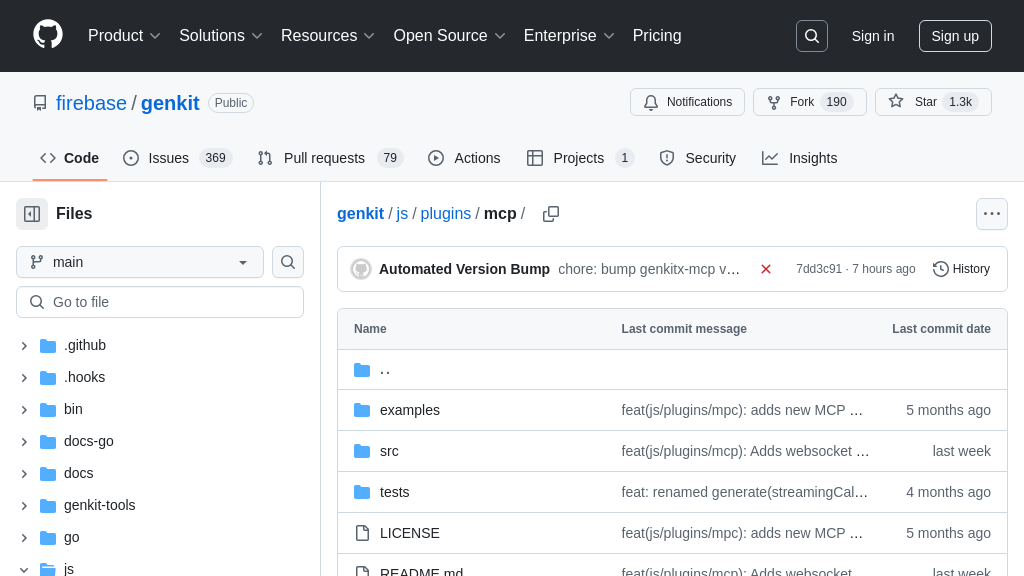
genkit Solution Overview
Genkit MCP is a plugin that seamlessly integrates Genkit, a framework for building AI applications, with the Model Context Protocol (MCP). Acting as both an MCP client and server, it empowers developers to consume MCP tools, prompts, and resources, while also exposing Genkit functionalities as MCP services.
As a client, Genkit MCP simplifies connecting to MCP servers via stdio, HTTP/SSE, or WebSockets, automatically discovering and registering available tools and prompts within Genkit. Special tools are provided for accessing server resources. As a server, it exposes Genkit tools and prompts through the MCP, fostering interoperability.
This integration streamlines AI development by enabling access to a wider range of resources and tools, promoting modularity and reusability across different AI systems. By bridging Genkit and MCP, developers can build more powerful and versatile AI applications with ease.
genkit Key Capabilities
Genkit as MCP Client
Genkit can act as an MCP client, consuming tools, prompts, and resources from any MCP-compliant server. This allows Genkit workflows to leverage external data sources, specialized tools, or pre-built prompts exposed through the MCP ecosystem. The mcpClient function generates a Genkit plugin that connects to an MCP server, automatically discovering and registering available tools and prompts within Genkit. This simplifies the integration process, allowing developers to focus on composing AI workflows rather than managing low-level protocol details.
For example, a Genkit application could use an MCP server providing access to a vector database to perform similarity searches, or a server exposing a code execution environment to run sandboxed code snippets. The mcpClient supports various transport mechanisms, including stdio, HTTP/SSE, and WebSockets, providing flexibility in connecting to different types of MCP servers. The client namespaces all MCP actions under the specified client name, preventing naming conflicts and improving code organization.
Technically, the mcpClient function dynamically creates Genkit tools and prompts based on the MCP server's capabilities. It handles the translation between Genkit's internal data structures and the MCP protocol, ensuring seamless interoperability.
Genkit as MCP Server
Genkit can also function as an MCP server, exposing its own tools and prompts to other MCP-compliant clients. This enables developers to share Genkit-based functionalities with other AI applications or services, fostering collaboration and reuse. By using the mcpServer function, a Genkit instance can be easily transformed into an MCP server, making its capabilities accessible through a standardized interface. This allows other applications to leverage Genkit's tools and prompts without needing to understand its internal implementation.
Imagine a scenario where a Genkit application provides a set of image processing tools. By exposing this application as an MCP server, other AI systems could seamlessly integrate these tools into their own workflows, enabling them to perform image manipulation tasks without needing to implement the processing logic themselves. The mcpServer function supports different transport mechanisms, allowing developers to choose the most appropriate option for their deployment environment.
Under the hood, the mcpServer function leverages the MCP protocol to expose Genkit's tools and prompts as standardized services. It handles the serialization and deserialization of data, ensuring that requests and responses are properly formatted according to the MCP specification.
Automated Tool and Prompt Discovery
The Genkit MCP client automatically discovers available tools and prompts from the connected MCP server and registers them within the Genkit environment. This eliminates the need for manual configuration and ensures that Genkit always has access to the latest capabilities offered by the MCP server. This dynamic discovery mechanism simplifies the integration process and reduces the maintenance burden for developers.
Consider a situation where an MCP server is updated with new tools or prompts. The Genkit MCP client will automatically detect these changes and register the new functionalities within Genkit, making them immediately available for use in AI workflows. This ensures that Genkit applications can always leverage the most up-to-date capabilities offered by the MCP ecosystem. The discovery process is triggered upon connection to the MCP server and can be repeated periodically to ensure that Genkit remains synchronized with the server's capabilities.
From a technical perspective, the Genkit MCP client uses the MCP's introspection capabilities to query the server for its available tools and prompts. It then dynamically generates Genkit tool and prompt definitions based on the information retrieved from the server.
Flexible Transport Options
Genkit MCP supports multiple transport mechanisms for connecting to MCP servers, including stdio, HTTP/SSE, and WebSockets. This provides flexibility in deploying and integrating Genkit with different types of MCP servers, regardless of their location or communication protocols. The choice of transport mechanism can be tailored to the specific requirements of the application and the capabilities of the MCP server.
For example, stdio transport is suitable for connecting to MCP servers running as local processes, while HTTP/SSE or WebSockets are more appropriate for connecting to remote servers over a network. The ability to choose the most appropriate transport mechanism ensures that Genkit can seamlessly integrate with a wide range of MCP-compliant services. The transport mechanism can be configured through the mcpClient function, allowing developers to easily switch between different options.
Internally, Genkit MCP uses different transport implementations to handle the communication with MCP servers. These implementations are responsible for serializing and deserializing data, establishing and maintaining connections, and handling errors.
